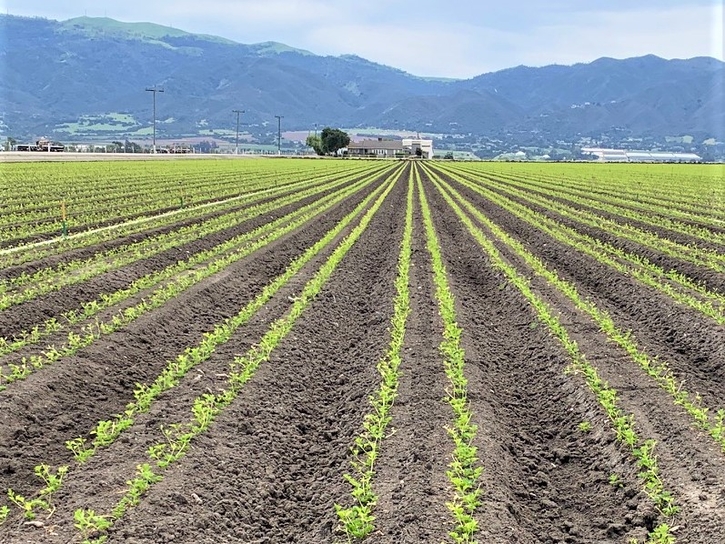Ag Land Conservancy has been Protecting Farmland for Two Decades

A Ford pickup truck heads south from Salinas to King City on Highway 101 with Brian Rianda and Sherwood Darington of the Monterey County Agricultural & Historical Land Conservancy (MCAHLC) onboard. They’re touring the farms protected by the Conservancy, starting with the Brun Ranch, just south of Salinas’ city limits.
Darington, who founded the MCAHLC in 1984, points to the property, which sits to the west of the highway: 150 acres of row crops and open space with an old ranch house and barn.
“That ranch has been in the family for three generations,” Darington says. “The family wanted to keep it in agriculture use. That was their driving force. It wasn’t about the money.”
About eight years ago, the MCAHLC bought an easement on the property for around $500,000 with a grant from the state Department of Conservation. The easement is a legal device attached to the property, and virtually guarantees that it will remain in agriculture forever.
“The Brun family made this easement possible through a bargain sale,” Darington says. This means the MCAHLC pays 85 percent of the true value of the land. The property owner donates the other 15 percent.
The Brun family could have made a lot more money selling the place to someone who wanted to build a lot of expensive ranchettes. But the family never considered that other option, says Sallie Brun.
“It’s always going to stay whole, and in farmland,” she says. “I don’t care if you wave a million dollar check in front of my face.”
Brun’s father and grandfather bought the land in 1933. Six years later, Brun’s father, Henry, and mother, Muriel, built the farmhouse. Sallie Brun and her sister, Marilyn Quadros, grew up in that house and attended nearby Spreckels Elementary.
Today, Marilyn’s eldest son and his family live in the same old farmhouse and his children attend the same school. They lease the land to farmers who grow romaine, iceberg, cauliflower, celery, broccoli and sometimes spinach. They don’t want the land’s usage to change.
“After my father’s passing 10 years ago, we were settling the estate and talking about the future,” Brun recalls. The family attorney had mentioned the land trust. The three Brun women agreed it sounded like a good idea.
“The population is going to keep on growing. We feel that there is a responsibility to keep the land in agricultural use.” Sallie Brun says. “It’s not that we’re against growth, because growth can go to the foothills, just not on the floor of the valley.”
• • •
As US Highway 101 bisects the Salinas Valley, running between the Santa Lucia and Gabilan mountain ranges, it cuts through some of the best farmland in the world. Between the rapidly growing cities, row crops and vineyards stretch from the highway to the foothills in both directions, totaling more than 250,000 acres of lettuce, celery, cauliflower, broccoli and wine grapes.
Much of this ag land is attractive to developers and others who would like to see it converted into strip malls or neighborhoods of pink stucco houses.
Some 15,000 acres of this land will remain farmland permanently because of MCAHLC and their commitment to purchasing easements, or development rights. It gets money from the state, or the US Department of Agriculture, or groups like the Packard Foundation that fund nonprofits. Once the MCAHLC owns the development rights, the property cannot be rezoned to allow for homes, or commercial space, or any other use.
latest news
Sponsors California Rodeo Salinas Inaugural Junior Rodeo
Camille Polson
Jun 10, 2024
Ag Land Trust Sponsors 80th Annual Salinas Valley Fair
Camille Polson
May 20, 2024
Camille Polson Accepted to Grower Shipper Associations's AgKnowledge Class XVI
Camille Polson
Apr 22, 2024




